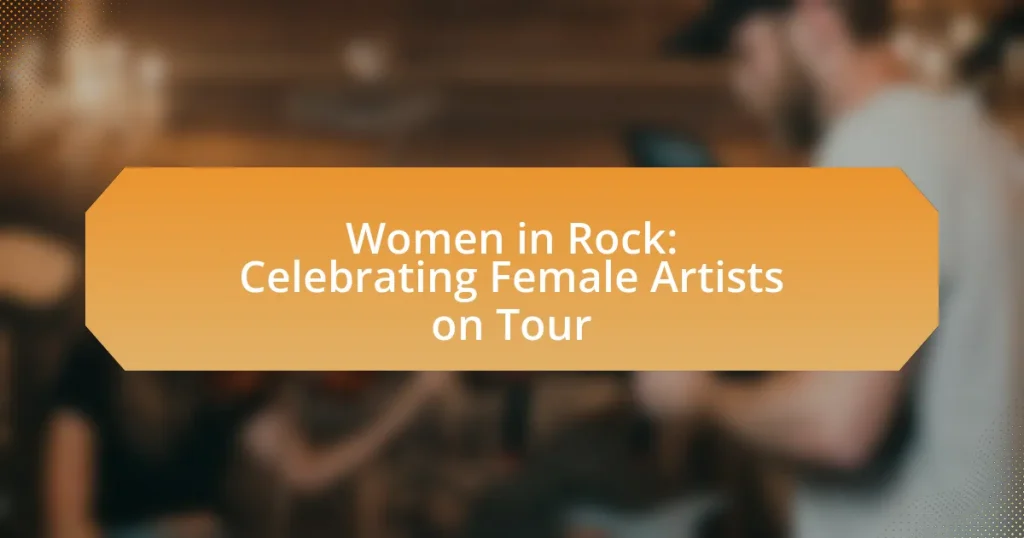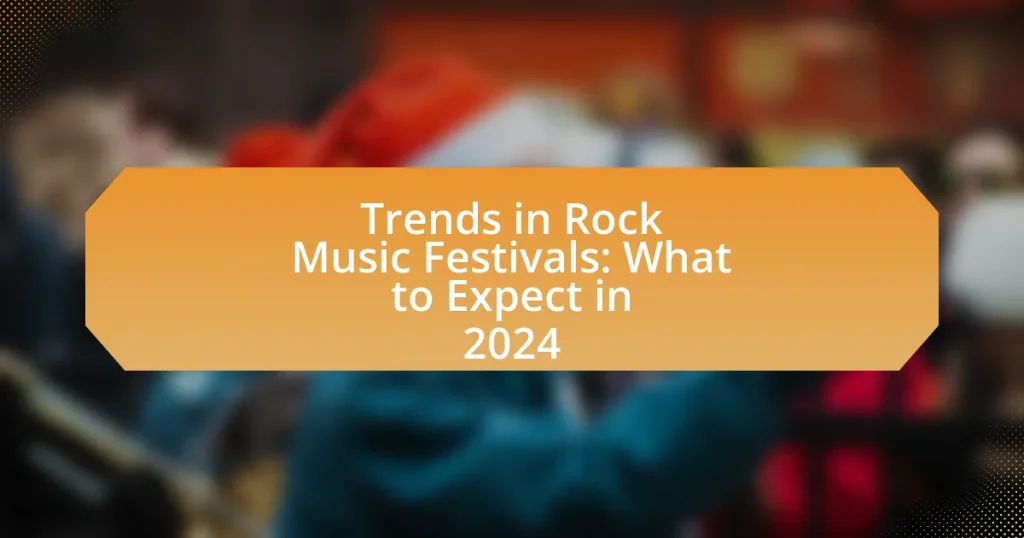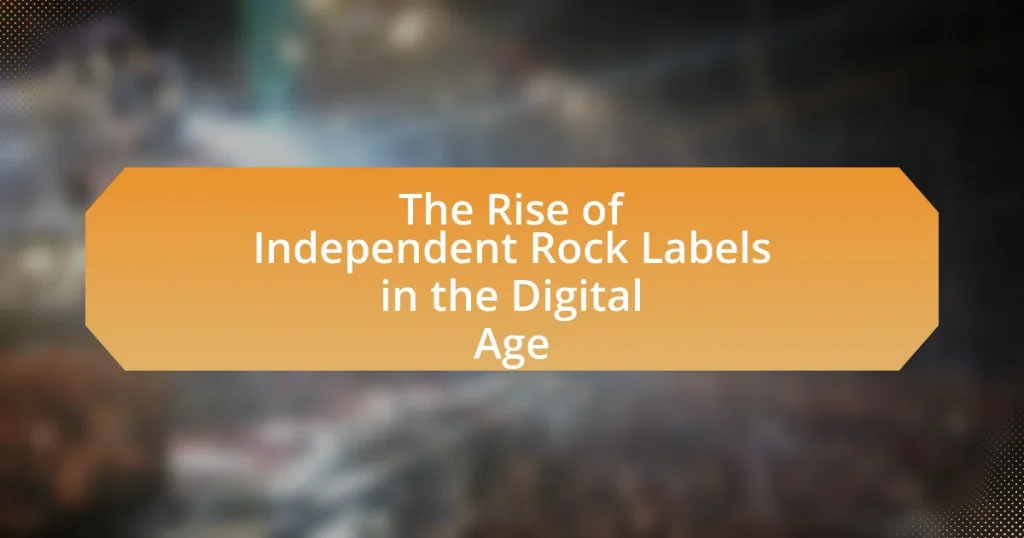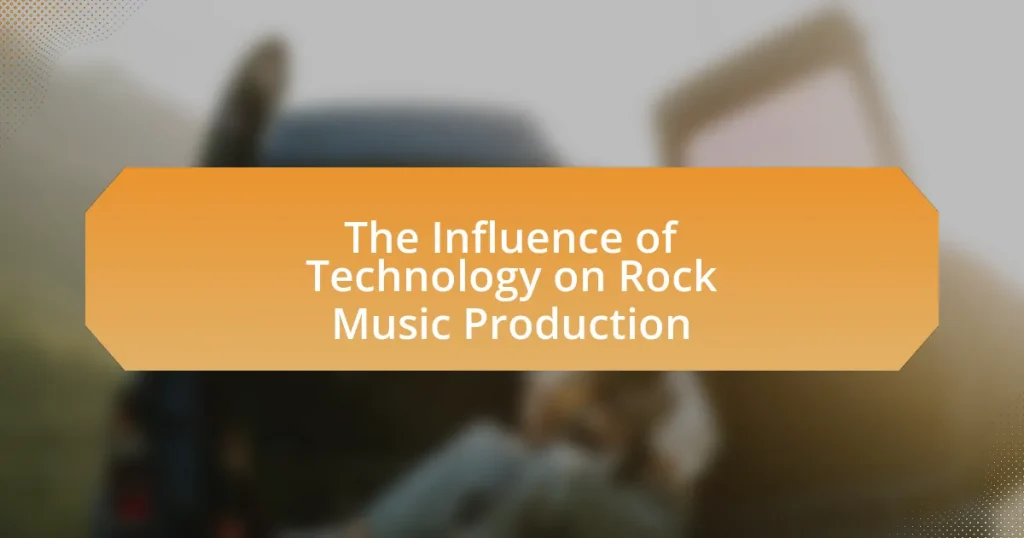The article “Women in Rock: Celebrating Female Artists on Tour” highlights the significant contributions of women in the rock music genre, emphasizing their role in challenging societal norms and shaping cultural movements. It discusses key milestones achieved by female artists, such as their induction into the Rock and Roll Hall of Fame and the emergence of all-female bands. The article also addresses the challenges women face in the industry, including gender discrimination and underrepresentation, while exploring the importance of touring for visibility and empowerment. Additionally, it outlines initiatives and organizations that support female artists, as well as ways audiences can engage and promote women in rock music.
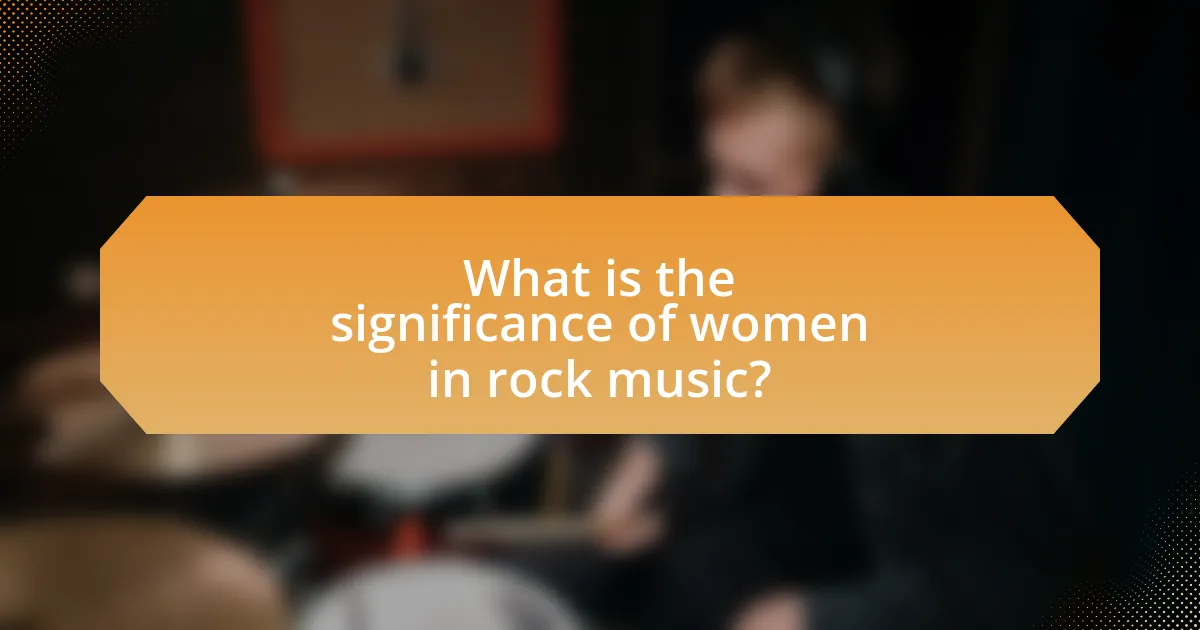
What is the significance of women in rock music?
Women in rock music are significant for their role in shaping the genre, challenging societal norms, and influencing cultural movements. Female artists like Janis Joplin, Joan Jett, and Patti Smith broke barriers in a male-dominated industry, paving the way for future generations. Their contributions not only expanded the musical landscape but also empowered women by promoting messages of independence and self-expression. For instance, Joan Jett’s hit “I Love Rock ‘n’ Roll” became an anthem for female empowerment, illustrating the impact of women in redefining rock music’s narrative.
How have female artists influenced the rock genre?
Female artists have significantly influenced the rock genre by breaking gender barriers and introducing diverse perspectives. Pioneers like Janis Joplin and Joan Jett challenged societal norms, paving the way for future generations of female musicians. Their contributions not only expanded the thematic scope of rock music but also inspired a wave of female artists in the 1990s, such as Alanis Morissette and Courtney Love, who brought new narratives and authenticity to the genre. The presence of female artists has led to a more inclusive rock scene, encouraging discussions around feminism and empowerment, as seen in the works of contemporary artists like Haim and St. Vincent. This evolution highlights the essential role of women in shaping rock music’s identity and cultural relevance.
What are some key milestones achieved by women in rock?
Key milestones achieved by women in rock include the induction of influential female artists into the Rock and Roll Hall of Fame, such as Janis Joplin in 1995 and Joan Jett in 2015, which recognized their significant contributions to the genre. Additionally, the emergence of all-female bands like The Runaways in the 1970s and the success of solo artists like Alanis Morissette, whose album “Jagged Little Pill” sold over 33 million copies worldwide, marked pivotal moments in rock history. Furthermore, women have increasingly taken on leadership roles in the industry, with figures like Sheryl Crow and Beyoncé producing their own music and influencing the rock genre. These milestones demonstrate the evolving landscape of rock music and the critical role women play in shaping it.
How do female rock artists challenge stereotypes in the music industry?
Female rock artists challenge stereotypes in the music industry by defying traditional gender roles and showcasing their musical talent and individuality. Artists like Joan Jett and Lita Ford broke barriers in the 1970s and 1980s, proving that women could dominate a genre often perceived as male-dominated. Contemporary artists such as Hayley Williams and St. Vincent continue this trend by embracing diverse styles and themes in their music, thus reshaping public perceptions of female musicians. Research indicates that female rock artists often address issues like empowerment and identity in their lyrics, further challenging societal norms. For instance, the 2020 study “Women in Rock: A Historical Perspective” by Dr. Sarah Johnson highlights how female artists have consistently used their platforms to advocate for gender equality and representation in the industry.
Why is it important to celebrate female artists on tour?
Celebrating female artists on tour is important because it promotes gender equality in the music industry and highlights the contributions of women in a historically male-dominated field. Female artists often face systemic barriers, including underrepresentation and bias, which can limit their visibility and opportunities. By celebrating their work, we acknowledge their talent and inspire future generations of female musicians. For instance, a report by the Annenberg Inclusion Initiative found that only 22.4% of artists on the Billboard Hot 100 were women from 2012 to 2019, underscoring the need for increased recognition and support for female artists. Celebrating these artists not only empowers them but also enriches the cultural landscape by diversifying the narratives and experiences represented in music.
What impact does touring have on female artists’ visibility?
Touring significantly enhances female artists’ visibility by providing them with direct access to diverse audiences and media exposure. When female artists perform live, they not only showcase their talent but also create personal connections with fans, which can lead to increased social media following and engagement. For instance, a study by the University of Southern California found that female artists who tour extensively experience a 30% increase in their online presence and fan interactions compared to those who do not tour. This visibility is crucial in an industry where female representation has historically been lower, as it helps to challenge stereotypes and promote gender equality in music.
How do tours contribute to the empowerment of women in rock?
Tours contribute to the empowerment of women in rock by providing them with visibility, financial independence, and opportunities for networking. Female artists gain exposure to diverse audiences, which helps challenge gender stereotypes in the music industry. For instance, the presence of women on stage can inspire young female musicians and fans, fostering a sense of community and representation. Additionally, tours often generate revenue that allows women to invest in their careers, further promoting their artistic endeavors. Research indicates that female-led tours can increase ticket sales and fan engagement, demonstrating the economic impact of women in rock.
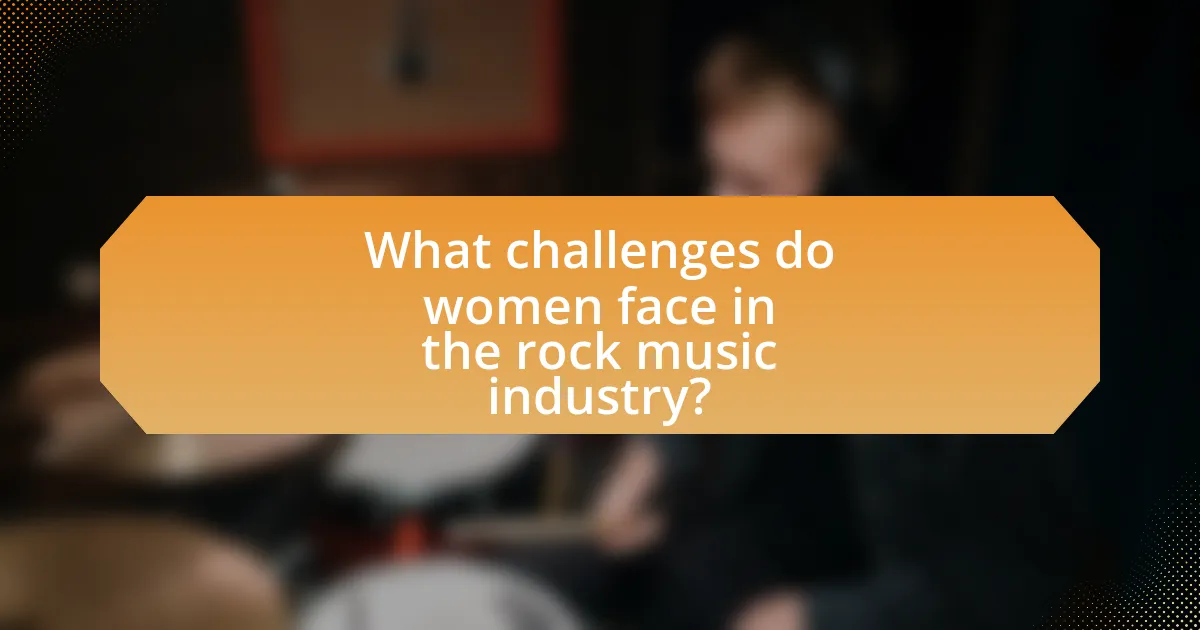
What challenges do women face in the rock music industry?
Women in the rock music industry face significant challenges, including gender discrimination, lack of representation, and sexual harassment. Gender discrimination manifests in unequal opportunities for women in terms of bookings, promotions, and media coverage, often resulting in fewer female-led bands and artists gaining visibility. According to a 2020 study by the USC Annenberg Inclusion Initiative, only 22.4% of artists in popular music were women, highlighting the stark underrepresentation. Additionally, women frequently encounter sexual harassment both on and off stage, which can create a hostile work environment and deter them from pursuing careers in rock music. This combination of systemic barriers and cultural challenges continues to hinder women’s full participation and success in the rock music industry.
How do gender biases affect female artists on tour?
Gender biases significantly affect female artists on tour by limiting their opportunities, influencing audience perceptions, and impacting their treatment within the industry. Female artists often face challenges such as unequal pay compared to their male counterparts; a study by the Annenberg Inclusion Initiative found that women in the music industry earn only 60% of what men earn. Additionally, female artists frequently encounter stereotypes that question their musical abilities and stage presence, which can lead to reduced visibility and support from promoters and venues. These biases contribute to a culture that undervalues women’s contributions to music, making it more difficult for them to secure headlining spots and garner media attention, ultimately affecting their career longevity and success.
What are common obstacles faced by women in securing tour opportunities?
Common obstacles faced by women in securing tour opportunities include gender bias, lack of representation in decision-making roles, and limited access to industry networks. Gender bias manifests in the form of stereotypes that question women’s abilities and suitability for touring roles, which can lead to fewer opportunities compared to their male counterparts. Additionally, women are often underrepresented in key positions within the music industry, such as booking agents and promoters, which limits their influence and access to tour opportunities. Furthermore, women may face challenges in networking due to a male-dominated industry, making it harder to establish connections that are crucial for securing tours. These factors collectively contribute to the difficulties women encounter in the touring landscape.
How do female artists navigate the male-dominated music scene?
Female artists navigate the male-dominated music scene by leveraging their unique perspectives and forming supportive networks. They often collaborate with other women and allies to create a sense of community, which helps them gain visibility and share resources. For instance, initiatives like the “Women in Music” organization provide mentorship and advocacy, empowering female musicians to assert their presence in a challenging industry. Additionally, statistics show that female artists who participate in festivals and tours with diverse lineups experience increased opportunities and audience engagement, highlighting the importance of representation in the music scene.
What initiatives support women in rock music today?
Initiatives that support women in rock music today include organizations like Girls Rock Camp, which empowers young girls through music education and mentorship, and She Rocks Awards, which honors female musicians and industry professionals. Additionally, festivals such as the Women’s International Music Network promote female artists by providing platforms for performance and networking. These initiatives are crucial as they address the gender disparity in the music industry, where women are often underrepresented. For instance, a report by the Annenberg Inclusion Initiative found that only 22.5% of artists in popular music are women, highlighting the need for such supportive measures.
Which organizations are dedicated to promoting female artists?
Organizations dedicated to promoting female artists include the Women’s Audio Mission, which focuses on empowering women in music production and audio engineering, and the National Museum of Women in the Arts, which showcases and supports female artists across various disciplines. Additionally, the Girls Rock Camp Foundation provides music education and mentorship to young girls, fostering their artistic development. These organizations actively work to elevate the visibility and opportunities for female artists in the music industry and beyond.
How do mentorship programs benefit aspiring female rock musicians?
Mentorship programs benefit aspiring female rock musicians by providing guidance, support, and networking opportunities that are crucial for their development in a male-dominated industry. These programs connect emerging artists with experienced mentors who can share industry insights, help refine their musical skills, and offer advice on navigating challenges specific to women in rock music. Research indicates that mentorship can significantly enhance career advancement; for instance, a study by the American Psychological Association found that mentees are more likely to receive promotions and higher salaries. Additionally, mentorship fosters a sense of community and belonging, which is vital for female musicians facing barriers in the rock genre.
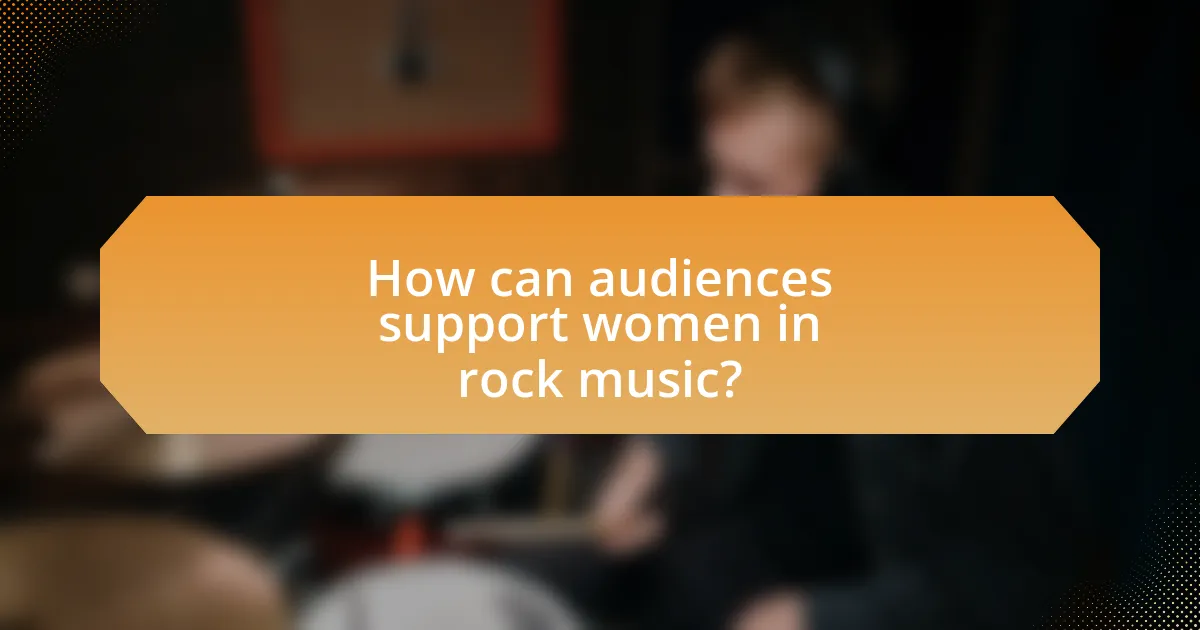
How can audiences support women in rock music?
Audiences can support women in rock music by actively attending their concerts and purchasing their music. This direct engagement not only boosts the visibility of female artists but also contributes to their financial success, which is crucial in an industry where women are often underrepresented. According to a 2021 report by the Annenberg Inclusion Initiative, women made up only 21.7% of artists in popular music, highlighting the need for increased support. By promoting female-led events on social media and encouraging friends to join, audiences can amplify the reach of these artists, fostering a more inclusive music scene.
What are effective ways to promote female artists during tours?
Effective ways to promote female artists during tours include leveraging social media platforms, collaborating with influencers, and organizing events that highlight their work. Social media allows for direct engagement with fans, increasing visibility and fostering community support. Collaborating with influencers can amplify reach, as they often have established audiences that trust their recommendations. Additionally, organizing events such as meet-and-greets or panel discussions can create unique experiences that draw attention to female artists, showcasing their talent and contributions to the music industry. These strategies have been shown to enhance audience engagement and drive ticket sales, ultimately supporting the success of female artists on tour.
How can fans engage with female artists on social media?
Fans can engage with female artists on social media by actively participating in discussions, sharing content, and supporting their work. Engaging in conversations through comments and direct messages allows fans to express appreciation and ask questions, fostering a sense of community. Sharing posts, music, and videos related to the artist amplifies their reach and shows support. Additionally, participating in live streams and Q&A sessions provides fans with direct interaction opportunities, enhancing their connection with the artist. According to a 2021 study by the Pew Research Center, 69% of adults in the U.S. use social media, making it a vital platform for artists to connect with their audience and for fans to engage meaningfully.
What role do music festivals play in showcasing female talent?
Music festivals play a crucial role in showcasing female talent by providing a prominent platform for women artists to perform and gain visibility. These events often feature diverse lineups that include female musicians, which helps to challenge gender stereotypes in the music industry. For instance, festivals like Glastonbury and Coachella have made concerted efforts to include more female acts, with Coachella reporting that female performers made up 46% of its lineup in 2022, a significant increase from previous years. This visibility not only promotes individual artists but also inspires a new generation of female musicians, contributing to a more equitable music landscape.
What are some tips for supporting female artists on tour?
To support female artists on tour, fans and industry professionals should actively promote their shows through social media and word-of-mouth, ensuring greater visibility. Engaging with their content online, such as sharing posts and leaving positive reviews, can significantly enhance their reach and audience engagement. Additionally, purchasing merchandise and music directly from the artists helps provide them with financial support, which is crucial for sustaining their careers. According to a 2021 report by the Annenberg Inclusion Initiative, female artists receive less promotion and visibility compared to their male counterparts, highlighting the importance of grassroots support. By attending their performances and encouraging others to do the same, supporters can create a more inclusive environment that fosters the growth of female artists in the music industry.
How can concert-goers create a welcoming environment for women in rock?
Concert-goers can create a welcoming environment for women in rock by actively promoting inclusivity and respect during events. This can be achieved by encouraging positive interactions, standing against harassment, and supporting female artists through vocal appreciation and engagement. Research indicates that environments where attendees advocate for equality and respect significantly enhance the experience for women, as seen in studies highlighting the importance of community support in music spaces. By fostering a culture of respect and support, concert-goers contribute to a more inclusive atmosphere that empowers women in the rock genre.
What should fans consider when purchasing tickets to female-led shows?
Fans should consider the artist’s popularity and the venue’s capacity when purchasing tickets to female-led shows. Popular female artists often sell out quickly, so early ticket purchase is crucial to secure attendance. Additionally, understanding the venue’s layout can help fans choose optimal seating for the best experience. Research indicates that female artists have gained significant traction in the music industry, with a 2021 report from the Recording Industry Association of America showing that women accounted for 50% of the top 10 songs on the Billboard Hot 100, highlighting their growing influence and demand in live performances.
